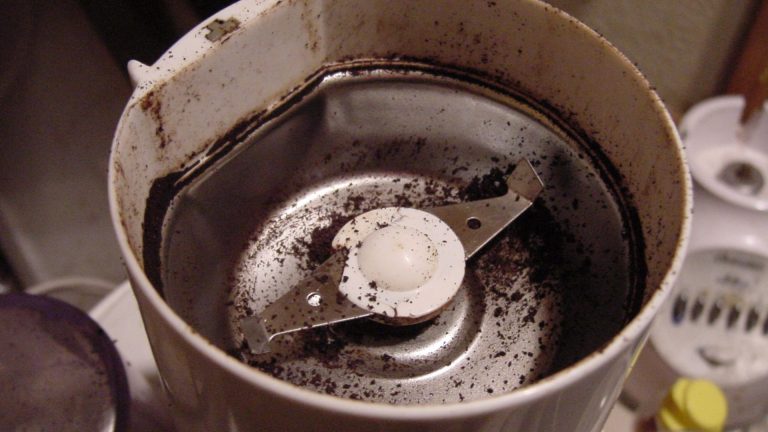How to Measure Coffee Beans? (With and Without Scales)
Making good coffee every day is difficult. Consistency is a tricky part of making coffee. When we initially started preparing coffee, it would be wonderful one day and a milky, bitter disaster the next. We could not dependably recreate our coffee until we optimized our measuring procedure using a kitchen scale. The simplest and easiest method to measure coffee regularly is with a kitchen scale, but we’ll show you several alternatives if you don’t have one. We’ll cover all you need to know about measuring coffee in this post.

How Much Coffee Beans do you need for One Cup?
- How Many Grams: A gram is an ideal unit to measure coffee beans. Usually, it needs 12 g of coffee beans per cup.
- How Many Tablespoons: If you use a kitchen machine, you may need to measure your coffee beans with a tablespoon. 2.2 spoons per Cup of coffee is the golden guideline.
- How Many Ounces: Use an ounce unit, but use a popper measuring device. The ideal is 0.5oz per coffee cup
- How Many ML: weighing coffee beans in milliliters may be difficult. So, if you do not have any other option, use this as 12 ml per Cup.
Why Should You Measure?
Measuring coffee guarantees you a consistent cup of coffee every time. Too much of anything is terrible for your health and wallet. So, it is nice and wise to measure coffee accurately before making coffee using your coffee maker. Normally, when coffee is roasted, it experiences several modifications. One of these changes is the loss of moisture in the beans. Green coffee has an approximate moisture level of 11% before roasting. However, roasting reduces the moisture level to as low as 3 to 5%. In that way, having amazing coffee is one thing, but understanding how to measure the correct material that goes into generating great content is another. For example, using too much coffee may result in a substandard blend.
Measuring Coffee Beans with a COFEE SCALE
Weighing the coffee we intend to use is one of the most accurate methods of determining the amount of coffee we will require. One advantage of using a scale for coffee beans is that it allows for faster response times and greater accuracy up to 0.1g. As a result, when purchasing a scale, be certain that it is waterproof. Second, such a scale must have a built-in timer to be effective. Furthermore, it must have a USB connector that may be used to recharge the system. The possibility of generating erroneous findings when measuring coffee using a technique other than a scale system exists because of variations in the mass of the coffee that may be caused by variables such as the origin, processing, size, roast degree, or type of beans. To use the scale to measure the coffee, one should follow the golden ratios. It is, therefore, sufficient to just weigh the beans and water together and let the scale tell you how much there is to weigh. Moreover, the use of scales has a significant influence on the overall quality and uniformity of the coffee. What this implies is that unless there is some degree of precision in the water to coffee ratio, it will be impossible to get a high-quality and consistent mix of the two components. It is preferable to utilize scales in order to eliminate this kind of measuring inaccuracy.
The following procedures must be completed before scales may be used to measure:
- Place the container containing the beans on the scale, which should already be on a level surface, and weigh it.
- To reset the scale balance on your balance scale, push the “tare” button.
- Fill the container halfway with the quantity of coffee you wish to drink.
- Keep in mind that we have provided you with a ratio guide above that might be of extra assistance.
Meanwhile, to prevent faults in the precision of measurement, measure your coffee before you grind it to avoid any inaccuracies. Acaia, Hario, Jennings, Brewista, and AWS are some of the best-known brands of coffee scales, and their products are available for purchase online. Acaia is the greatest scale you can use to measure your coffee, according to roast specialists. It is recommended above other scales due to the usage of beautiful current technology that the Acaia incorporates. Their scales are equipped with a flow rate meter, Bluetooth connection, and brew guidelines, among other features.
Measuring Coffee Beans without a coffee scale:
Don’t worry if you don’t have a scale. Even if you don’t have a scale, there are a few things you can do to improve the accuracy and consistency of your coffee measurements.
- Using a Smaller Increment– Use a smaller measuring cup or scoop. Large scoops are difficult to adjust. Using a smaller scoop makes dosage adjustments easier because the stages from one to two are fewer. A teaspoon is good, but smaller is preferable. Using smaller scoops requires a little more time and work, but the benefits are worth it.
- Only Using Level Scoops– It is advisable to use level scoops rather than heaping scoops since you’ll be more consistent. First, scoop out a large portion, and then use a knife to scrape off the remaining grinds. Using this method, you may ensure that you are getting the same amount of product every time.
- Packing the Scoop – Packing the Scoop- Inflated scoops can provide the idea of a full scoop when there is actually less coffee. Then, tap the leveled scoop hard on the counter. This causes a little collapse of the coffee, leaving some empty space. Then overfill the scoop to level it. Rep till there are no holes in the coffee.
Conclusion:
To conclude, it’s as crucial to measure your coffee’s content as it is to drink it. Never drink coffee unmeasured. So, can you recall why you should utilize the scale? Never measure coffee without a scale. It saves you time and money while benefiting your body. You enjoy your warm Cup of coffee on a chilly winter day, knowing it was properly measured. This guide should help you achieve the right ratio for making lovely cups of coffee.


